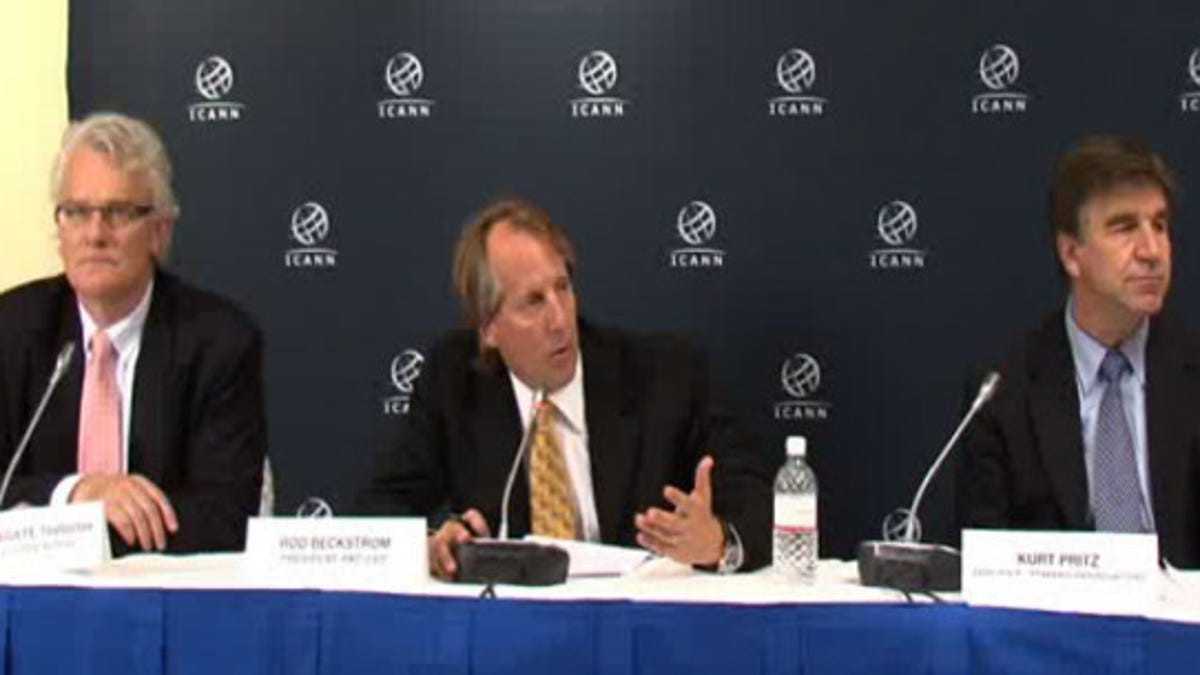New Net addresses mean new trademark issues
The Internet's overseers approve a plan to expand the number of top-level domains. That opens the door for .paris, .canon, .eco--and for a new era of trademark complications.

Forget being limited to .com, .net, and .org.
The Internet's overseers today approved a plan to dramatically expand the number "generic top-level domains," or GTLDs, as soon as the end of 2012. There are only 22 such GTLDs today--others include .edu, .mil, and .biz--but the expansion could add dozens or potentially even hundreds more.
Among other implications, that means new opportunities and new complications for trademark holders.
"It opens up [what's] the right of the dot," said Rod Beckstrom, chief executive of the Internet Corporation for Assigned Names and Numbers, or ICANN, speaking at a press conference in Singapore after the ICANN board's vote. "When you think .com, .net, think .open to new ideas."
The move will give a completely new look to Internet addresses. Domains can range from broad terms such as .auto to specific ones such as .canon.
Thus, the blessing and the curse that are new GLTDs: companies get new opportunities to reinforce their brand names, but at the same time it means trademark holders could face expensive new challenges in defending their trademarks.
ICANN has worked to mitigate these issues, for example with a trademark clearinghouse to track registered names. And there are consequences that extend as far as ICANN canceling a contract with a registrar that cooperates with a "bad actor," said outgoing ICANN Chairman Peter Dengate Thrush.
"We've created brand-new system to allow...a very rapid takedown" of a domain found to be infringing trademarks, Dengate Thrush said. "The tradeoff is...if someone brings a case, it's got to be argued and proved to a pretty high standard."
Likely new domains for which ICANN expects applications include .eco, .green, .berlin, and .paris, ICANN said, and the new system accommodates names written in native scripts such as those used in China and Japan.
ICANN will accept applications from registries that want to operate new top-level domains from January 12, 2012 to April 12, 2012. It's not for the faint of heart: There's an application fee of $185,000, it costs $25,000 a year to operate the registry, and other fees are possible, too.
Those fees are very significant. Trademark holders wanting to protect their intellectual property might feel obliged to try to set up a registry of their own to ward off a new class of cybersquatters. And in some cases, rights to a TLD registry might be decided through an auction, which potentially could increase costs in an unpredictable way.
But it's a big opportunity, too, for those who want their names in the public eye. Web addresses could get more of a brand-name look, and e-mails could carry more weight as being from a specific company.
Matthew Sammon, a partner at patent and trademark law firm Marks & Clerk, looks at the sunny side.
"Large companies like Coca-Cola and Google have been waiting years for this opportunity to fully brand their web addresses. We're likely to see every brand that can applying for their own domain suffix," Sammon said. "The lengthy and costly procedure involved in the application for the new domain suffixes should help to keep would-be cyber-squatters out of the process."
Updated at 6:59 a.m. PT with Marks & Clerk commentary.

